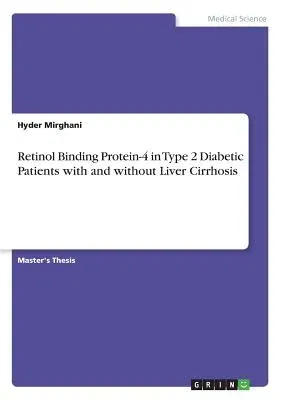Master's Thesis from the year 2017 in the subject Medicine - General,
grade: C, language: English, abstract: The aim of the work is to assess
the level of Retinol Binding Protein 4 in type 2 diabetic patients with
and without liver cirrhosis. Diabetes mellitus is a common disease
despite the fact that only half or two thirds are diagnosed, the figure
is around 189 million people in 2003, and this may reach 324 million by
2025. Diabetes mellitus result from a lack or diminished effectiveness
of endogenous insulin. Hyperglycemia is just one aspect of a far
reaching metabolic derangement, which may cause serious microvascular
and macrovascular complications. Etiological wise diabetes mellitus is
classified into type 1, type 2 and other causes, with type 2 accounting
for 90% of cases globally. The prevalence of type 2 diabetes continues
to rise at alarming rate, significant defect in glucose homeostasis and
fuel metabolism are detectable long before overt diabetes occurs. One of
the earliest derangements in metabolism is insulin resistance. It is
defined as impaired glucose disposal in a hyperinsulinemic -euglycemic
study. Fasting hyperinsulinemia, a compensatory mechanism to maintain
euglycemia in setting of insulin resistance, is also present before
overt diabetes occurs. Integrated fuel homeostasis relies among
interactions among numerous tissues in widely varying states, including
the fed state, fasting, and exercise. This harmony in various tissues is
maintained by communication between them, and is signaled by glucose and
its various metabolites. When this communication between tissues (mainly
pancreas, adipose tissues, and liver) is lost insulin resistance and
diabetes mellitus occurs. Retinol binding protein 4 (RBP4) a 21-KDa
protein synthesized in the liver and adipose tissues, formerly
recognized for its role as a specific transport for vitamin A, now it is
known that it plays a crucial role in insulin resistance and diabetes
mellitus. Adipose RBP4 exp


